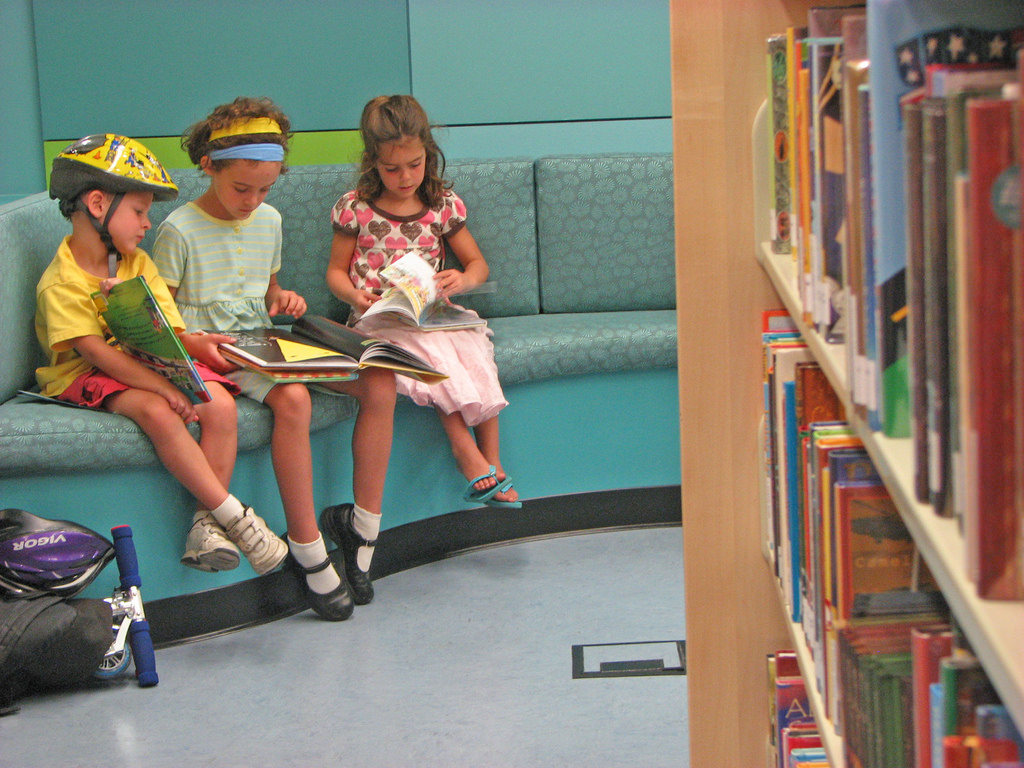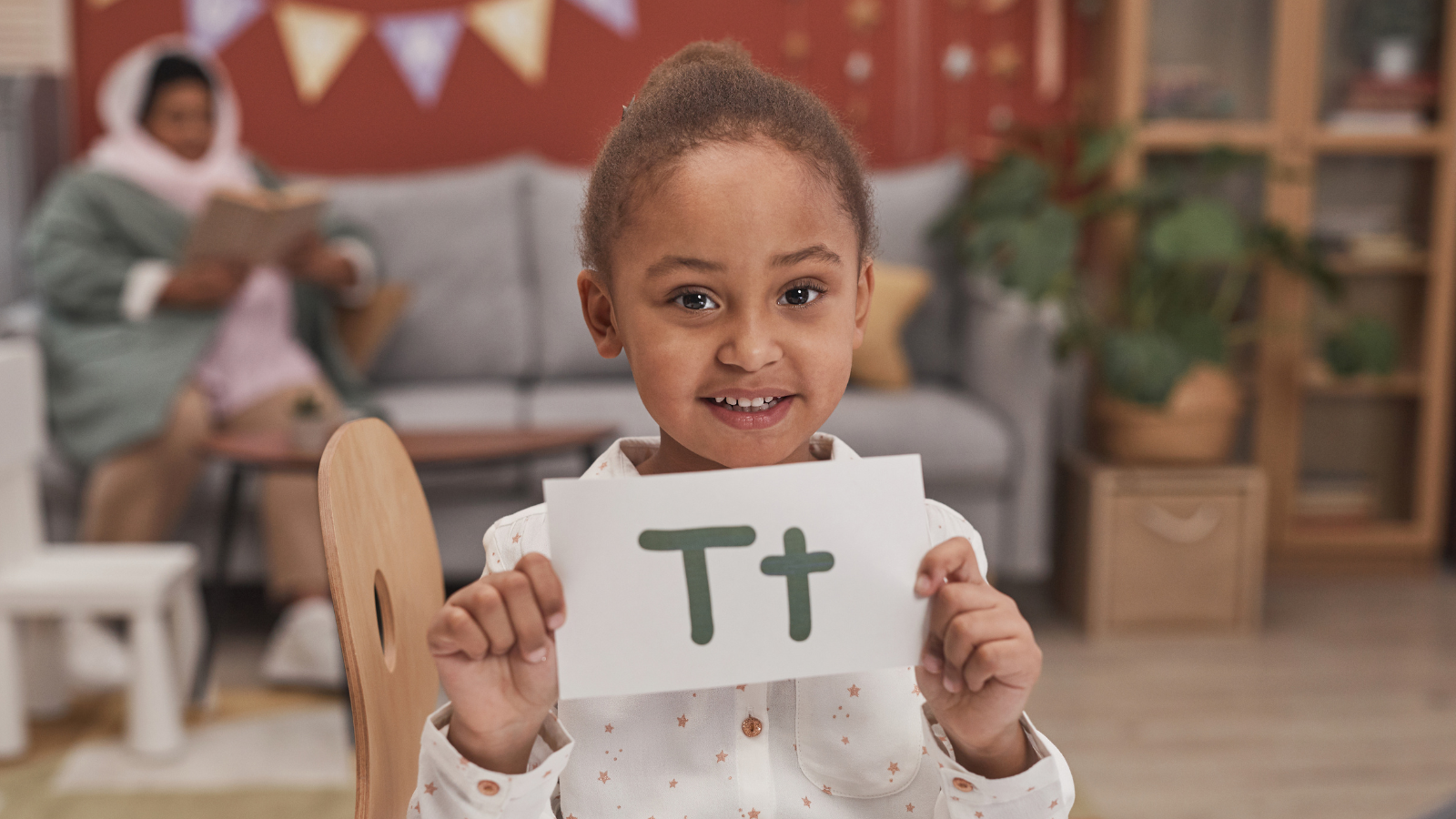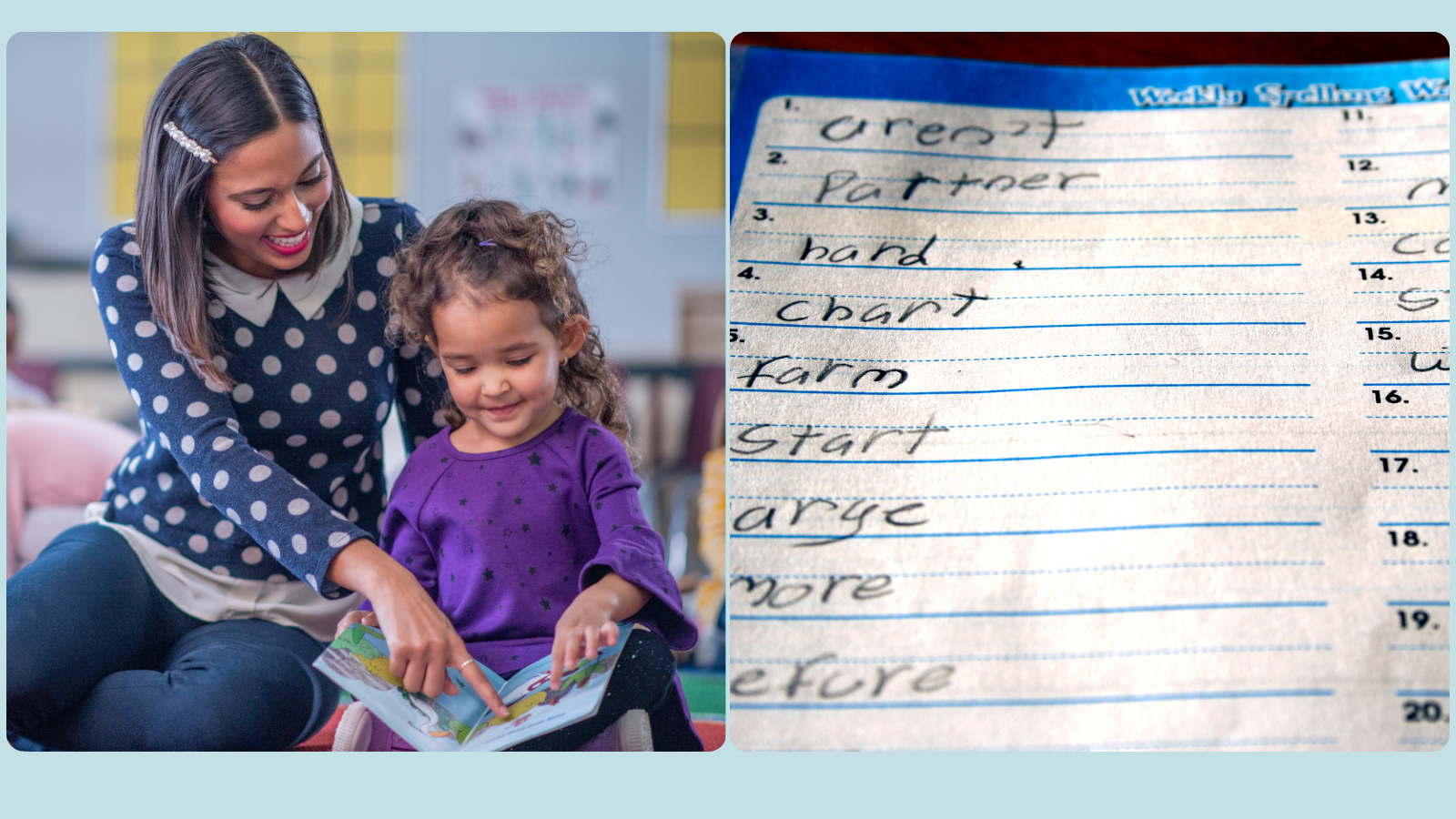Is your child struggling to read? Here’s what works
On reflection, I’m incredibly lucky.
Both my parents were teachers. Growing up, my house was full of chatter, stories and books. My early state school education in regional Victoria was long on “old school” phonics and short on fads.
I learned to read without much trouble. I discovered many of the things I’m still passionate about in life – dinosaurs, planets, social justice, travel, speech and language, consumer rights, history, current affairs, philosophy, and bad science fiction – because I could read. Reading lets me learn new skills, explore the world, entertain myself and my kids, connect with friends and colleagues, and of course, earn my living as a speech pathologist and lawyer.
Children and adults who struggle to read miss out on many of the opportunities good readers take for granted. Helping people to learn to read is important work – far too important to waste time, energy and money on false ideas and programs that don’t work.
In this article, we summarise some of the key evidence-based principles to help children (and adults) to read. We also include links to peer-reviewed evidence, leading researchers’ websites, and some evidence-based literacy programs and resources.
12 principles I apply
A. Learning to read is a right, not a privilege
1. Reading is a human right, and affects your health, work opportunities and life-participation.
- The General Assembly of the United Nations is convinced that: “[L]iteracy is crucial to the acquisition of every child, youth and adult, of essential life skills that enable them to address the challenges they may face in life, and represents an essential step in basic education, which is an indispensable means for effective participation in the societies and economies of the 21st century.” (GA Resolution 56/116.)
- Low literacy may impair health, affecting the patient-doctor communication dynamics, and leading to substandard medical care. It is associated with poor understanding of written or spoken medical advice, adverse health outcomes, and negative effects on the health of the population (e.g. AHRQ Report, see below).
- Early reading difficulties are related to children’s ability to develop positive social skills (e.g. Bennett et al., 2003).
- Academic problems, like poor reading, often foster behavioural problems, which frequently result in disciplinary practices that remove the student from school (Christle et al., 2005).
- Low levels of literacy affect educational attainment and labour force participation (ABS, 2009).
2. Learning to read opens doors; poor reading ability closes them. Literacy creates opportunities for lifelong learning and training, a good job, housing stability and improved health across your life (Gakidou et al., 2010). (Not being able to read has big negative effects on school achievement, job opportunities, mental health and participation in society.) Arguably, reading is more important than ever, with most jobs in the West now requiring literacy (e.g. Murnane, 2004), and with access to the Internet, social media platforms and even texting friends requiring a degree of literacy to participate socially (e.g. Durkin et al., 2011).
B. Reading instruction should be based on independent, peer-reviewed evidence (not ideology), and should take the client’s socio-economic background and oral language skills into account
3. Reading is “biologically unnatural“. Humans have only been reading since about 3000BC (Fischer, 2001). Unlike speaking, you have to learn to do it (e.g. Gough & Hillinger, 1980). That’s why literacy is still not universal (e.g. Gough, 1996). While it’s true some kids find reading easy to learn, others need a lot of help.
4. Reading instruction should be based on the “Five Big Ideas” (aka the “Big Five”). Independent, peer-reviewed scientific research evidence reviews (cited below) say that, to learn to read, you need to be taught these “Big Five”:
- Phonemic awareness (also known as phonological awareness): knowledge about the sound structure of the language and the ability to manipulate the sound making up that structure (Rayner, Foorman, Perfetti, Pesetsky, and Seidenberg, 2001).
- Phonics: see below.
- Vocabulary: it’s been estimated that, to cope with the curriculum, a Year 2 child needs to understand 300-400 words; a Year 3-4 child needs to understand 3,000-4,000 words; and a Year 5 student needs 10,000! (Hempenstall, 2005).
- Comprehension skills.
- Reading fluency.
5. As one of the Big Five, direct synthetic phonics instruction is essential. In the USA, Australia and the UK, independent evidence reviews affirmed the need for systematic, direct and explicit phonics instruction so that children master the essential alphabetic code-breaking skills required for foundational reading proficiency. (The importance of teaching teachers to do this was recognised by the New South Wales Board of Studies in 2015 – New South Wales Board of Studies, Teaching and Educational Standards. (2015).)
The best phonics to teach children is “synthetic phonics“. Synthetic doesn’t mean “fake”, here; it means “synthesising” (or blending) the sounds (phonemes) together to read words. You can read an excellent explanation of “synthetic phonics” by some of my favourite literacy researchers here.
6. It’s a myth that you can’t use phonics to read English words. In fact, according to Hanna et al., (1996):
- 50% of English words are directly decodable with synthetic phonics;
- 36% have only one “breach” of the sound-letter link (usually a vowel);
- 10% can be spelt properly if morphology and word histories/roots are taken into account; and
- only 4% are truly irregular.
7. Oral language skills (talking and understanding) and reading skills are linked; oral language and reading skills are mutually beneficial. Improvements in spoken language skills improve reading skills, and vice versa. Oral language and reading skills piggy back on each other during the school years (Snow, 2016). If one is impaired or delayed, the other suffers. For example, children with speech-language language disorders (diagnosed or not) are at a high risk of having reading problems.
Similarly, children with reading problems may have problems learning new words and higher level language skills, which then affect their oral language development. (This, by the way, is why I screen oral language and phonological awareness in addition to decoding and reading comprehension when assessing a school-aged child with reading problems.)
8. Kids learn to read on an uneven playing field. Socio-economically disadvantaged children are at greater risk of language and reading difficulties than children from higher socio-economic backgrounds. Even though oral language development is biologically natural, it’s vulnerable to environmental factors. For example, the foundations of early language development (and the emergence of emotional security) both depend on a high dose of quality carer engagement. By the age of 4 years, on average, children of high income, professional parents may have heard 30 million more words than some children from a socio-economically disadvantaged background (e.g. Hart & Risely, 1995).
Different children have very different levels of exposure to language and books when the turn up for their first day at school. Unsurprisingly, this has knock-on effects for readiness to learn to read (see the discussion about the Matthew Effect below).
C. Evidence-based reading instruction for young struggling school-aged children is urgent: the critical 3-year window to teach children to read well
9. The 3-year learning-to-read “window”. In the first three years at school, the focus is on helping children learn to read. This is when good evidence-based reading instruction is most important. Your child’s access to good reading instruction in this period is important for all children, and vital for children from low-socioeconomic backgrounds and children struggling to read.
10. The “fourth grade slump”. Starting in the fourth year of school, the focus of the curriculum switches away from learning to read. Instead, children are expected to “read to learn”. For good readers, this is no problem. For poor readers, this is where the real trouble begins:
- By the fourth year of school (year 3), a child’s performance relative to his/her peers becomes fairly fixed (Spira et al., 2005);
- your child’s reading level by the start of the third grade is a good predictor of:
- later academic achievement; and
- later mental and social health; and
- the “Matthew Effect” kicks into high gear.
11. The Matthew Effect. With reading (as with money), the rich get richer, and the poor get poorer. Good readers read more, learn more word meanings and then improve their reading skills. Children who are poor readers read less, and don’t learn new words as quickly, which further slows their growth in reading ability (Stanovich, 1986). As school progresses, the gap between good and poor readers grows and grows and grows.
That’s not to say that older kids and adults can’t learn to read. It’s just that it’s harder. As with language difficulties generally, the earlier you get help, the better. But it’s never too late!
D. Too many children and adults can’t read properly
12. Literacy levels are a big problem in Australia:
- In 2011, a quarter of Australian Year 4 children are below the expected standard in reading; and 7% performed “extremely poorly” (ACER, 2012).
- In 2009, 43.7% of adults were at or below Level 2 in their reading skills on a 5 point scale (ABS, 2009).
- In 2011, the Industry Skills Council of Australia found that millions of Australians have insufficient language, literacy and numeracy (“LLN”) skills to benefit from training or to participate effectively at work (ISCA, 2011).
The human, social and economic costs of low literacy are enormous.
E. So what gets in the way?
A controversial question! Here are some candidates:
- Professional divides: An unhelpful divide exists between the knowledge bases and expertise of teachers, speech pathologists and education psychologists. Teachers are educators, whereas psychologists and speech pathologists are health professionals. Reading failure is of course both an education and health problem. But the lack of coordination between different professionals doesn’t help clients with reading problems or their families. When I work with a school-aged child, my first port of call is the parents. My second port of call (with parents’ consent) is to teachers and any health professionals who’ve worked or are working with the child. The more we can coordinate our care and approach, prioritising the client’s interests and goals, the better things tend to go.
- Ideological squabbling. If you’ve got a day or two to waste surfing the Internet and getting confused at all the navel gazing and self-interest, Google “Reading Wars”. In short, the “war” was fought between supporters of:
- a phonics- and phonemic awareness-based approach to reading instruction, focused on letter-sound links and blending sounds to read words; and
- so-called Whole-Language theories, based on post-modern theories of child development, teaching children to read words from “cues”, like context and pictures in predictable texts.
Although it was hoped that the independent reviews in the USA, UK and Australia (cited below) resolved the “reading wars” in favour of phonics and the rest of the Big Five, there are still programs influenced by Whole Language philosophies used today, including the much-maligned “Reading Recovery” program (which you can read about here). In any case, the key casualties of the war were and continue to be children failing to learn to read.
- Inadequate training in the Big Five (and the “Peter Effect”). You can only give what you have; and you can only teach what you know. If you haven’t been taught properly how to teach reading using evidence-based teaching methods, you will have great difficulty teaching school children to read – especially struggling students. Unfortunately, some teachers, speech pathologists and psychologists haven’t been trained in how to teach reading using the evidence, especially if their University lecturers subscribed to the Whole Language ideology. Any education or health professional engaged in helping people to read should have training in how to teach the Big Five.
- Commercial programs unsupported by independent evidence, glossy products and fads. Unfortunately, there is a big market for children and adults with poor literacy in Australia and elsewhere. Lots of reading programs seek to “exploit” this market, and some of them have no evidence to support their effectiveness. Of course, it’s hard for parents (and even some teachers) to know which ones are evidence-based. Fortunately, there are independent research groups that publish evidence summaries to assist. In our clinic, for example, we only use evidence-based programs based on the Big Five.
Whatever the reasons, we should all strive to read and apply the best quality, independent evidence to better support school-aged children, young adults, and adults with reading problems.
Related articles:
- Kick-start your child’s reading with speech sound knowledge (phonological awareness)
- How to find out if your child has a reading problem (and how to choose the right treatment approach)
- “I don’t understand what I’m reading” – reading comprehension problems (and what to do about them)
- 6 strategies to improve your child’s reading comprehension and how to put them into practice
- 5 resources you can use at home to help your child to read
- How to help your school-age child to learn new words – the nuts and bolts of how I actually do it in therapy
- Do we spend too much time on rhyming books? What else should we do to prepare pre-schoolers to read?
- The forgotten reading skill: fluency, and why it matters
- Too many children can’t read. We know what to do. But how should we do it?
- 24 practical ways to help school-aged children cope with language and reading problems at school and home
- Dyslexia vs Developmental Language Disorder: same or different, and what do we need to know about their relationship?
- “Does dyslexia exist?”
- 15 practical ways to help your son discover a passion for reading
- Teaching the alphabet to your child? Here’s what you need to know
- Are reading comprehension problems caused by oral language deficits?
- Hyperlexia: FAQs
- Helping older students with their reading comprehension. What should we teach and how?
- Speech-language therapy to help teens to text? Are you joking?
- Reading heroes: the fantastic Mr Flesch: phonics warrior and plain English pioneer
Principal source: Snow, P.C. (2016). Elizabeth Usher Memorial Lecture: Language is literacy is language – Positioning speech-language pathology in education policy, practice, paradigms and polemics. International Journal of Speech-Language Pathology, 18:3, 216-228. (This article should be mandatory reading for any teacher, speech pathologist or education psychologist working in literacy.)
Further reading
Reading as a human right that affects your health:
US AHRQ’s Evidence Report No. 87, Literacy and Health Outcomes (summary)
Evidence for what works, including evidence supporting the Big Five:
Rose, J. (2006). The [UK] Independent Review of the Teaching of Early Reading (aka “The Rose Report”)
Evidence that too many children and adults in Australia are poor readers:
Industry Skills Council of Australia (2011). No More Excuses.
The role of speech pathologists in the development of literacy:
Speech Pathology Australia. (2011). Position Statement: Literacy.
On the shoulders of experts: evidence-based literacy researchers, organisations and blogs I follow:
If you are interested in the science of reading and evidence-based reading programs and resources, here are some of the key experts, organisations and literacy/language blogs I follow closely (in no particular order):
Image: http://tinyurl.com/z3rgm3u

Hi there, I’m David Kinnane.
Principal Speech Pathologist, Banter Speech & Language
Our talented team of certified practising speech pathologists provide unhurried, personalised and evidence-based speech pathology care to children and adults in the Inner West of Sydney and beyond, both in our clinic and via telehealth.








